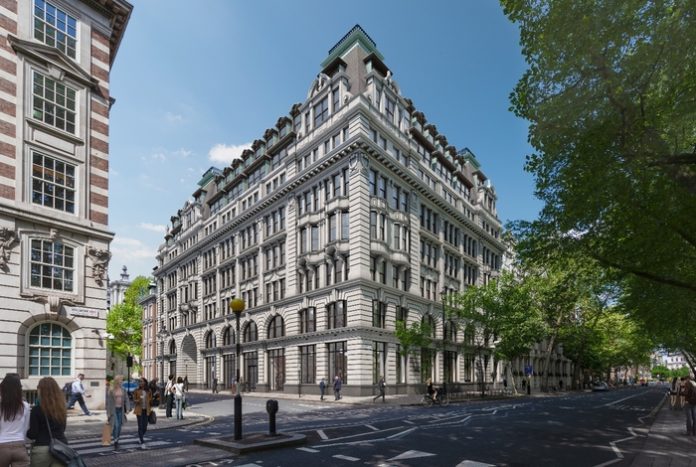Old Park Lane Management Limited (OPLM) has secured a resolution to grant planning consent from Westminster City Council for Baola Properties Limited on its 126,000-sq-ft office development at 7 Millbank, in Westminster, London SW1.
7 Millbank will be OPLM’s first carbon neutral-in-use development in London and is part of the company’s long-term vision to develop projects with good placemaking, quality design, and exemplary sustainability standards.
The development will replace an existing building of 126,0000-sq-ft, currently occupied by the Parliamentary Estate. This will involve the careful dismantling of the existing building’s period façade, so it can be restored and rebuilt, with new development behind. This will provide high-quality, sustainable workspace, with an enlarged reception, atrium and staircase, and terraces on the 6th, 7th and 8th floors to provide amenity and enhance urban greening. OPLM aims to create a building which will be highly sustainable for the long term, with high standards of wellness, flexibility, and energy efficiency for occupiers.
The demolition is due to commence in autumn 2022. Completion is scheduled for late 2025.
OPLM is a London-based private investment company formed in 1995, with more than 1.5 million sq ft of assets in the Central London market.
Consultants to the scheme are Project Managers G&T, Make Architects, Waterman Structures Limited, Hilson Moran and WT Partnership. Gerald Eve are planning advisers and Kanda Communications assisted during the planning stage.
Tim Sketchley, Chief Executive at Old Park Lane Management Limited, said:
“We welcome this positive planning decision, which allows us to create an environmentally sustainable building with modern, adaptable workspace and amenity, for generations to come. As our first carbon neutral-in-use development, it sets a standard for the future, which we know is important to contemporary occupiers.”
The development will benefit from excellent public transport access, via Westminster and St James’s Park Underground stations, while also being close to Cycle Superhighway 3 and 8.
The current 9-storey building, which sits as part of a group of buildings that surround Smith Square, was constructed as the headquarters for British American Tobacco between 1913 and 1915.



















